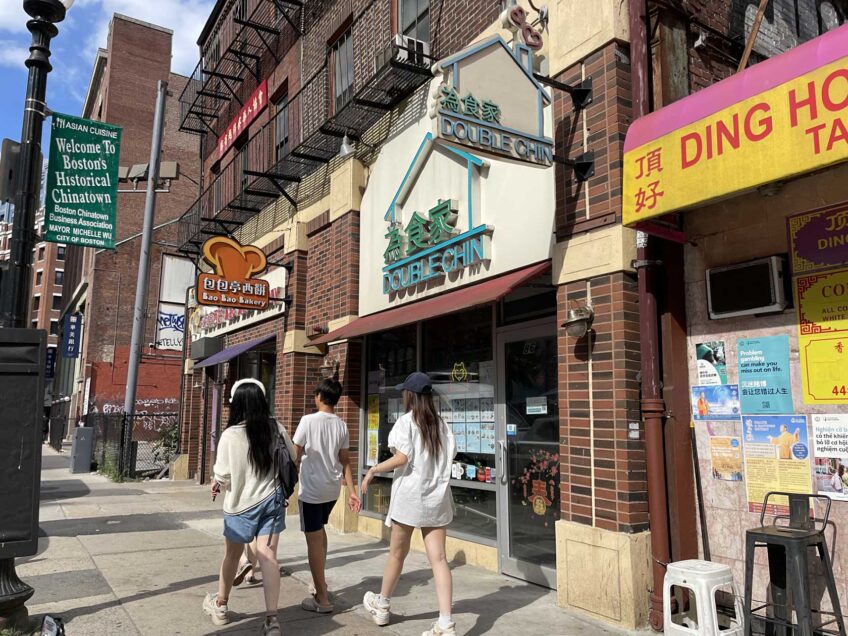Lack of jobs strikes city unequally
Left out: Blacks, Latinos youth and less-educated
A new report from the city Office of Workforce Development and the Boston Redevelopment Authority’s Research Division shines further light on those struggling to make a living in the midst of the city’s economic boom.
Boston’s unemployment rate, 4.3 percent, remains below state and national levels. Those left out of the labor market disproportionately are black, Latino, young or with low levels of education, according to the “Boston’s Workforce: An Assessment of Labor Market Outcomes and Opportunities” report.
Many still suffering from unemployment also are concentrated in certain neighborhoods. According to the report, Roxbury, Dorchester, Mattapan and East Boston are home to census tracts with some of the highest levels of unemployment, with rates soaring up to one-and-a-half to three times the citywide average.
On the web
Read the BRA report: http://owd.boston.gov/wp-content/uploads/2016/03/2015-Office-of-Workforce-Development-Workforce-Report-Booklet_v1_r8_spreads.pdf
Education barrier
A major determinant in acquiring quality jobs in Boston: education level. Unemployment rates are twice the citywide average for residents without high school degrees.
The same four neighborhoods in which high unemployment rates were concentrated also showed high concentrations of residents whose education attainments were high school degrees or lower. In some parts of Roxbury, Dorchester, Mattapan and East Boston, more than 80 percent of adults over 25 years old have no more than a high school degree. And among those in the city with less than high school degrees, blacks, Latinos and Asians are disproportionately represented, the report found.
Meanwhile, the demand for educated workers is especially high in Boston. Nationally, 26.5 percent of jobs list bachelor’s degrees as prerequisites; in Boston, that figure shoots to 40.5 percent of jobs.
Even in jobs not explicitly requiring college degrees, they seem to be an important factor in hiring. For instance, while 77 percent of Boston’s nursing jobs require only an associate’s degree, more than 80 percent of the city’s RNs hold bachelor’s degrees. This may mean that those meeting the threshold for education requirements are being passed over for applicants whose education go further.
Boston’s particular education emphasis seems set to continue: Many of the new jobs being created in the city are likely to require college degrees, the report said.
It also forecast that “by 2022, 41 percent of Boston jobs are expected to require a bachelor’s degree (compared to 27 percent nationally), and 36 percent will be available to those with a high school degree or less (compared to 50 percent nationally.”
Education also significantly influenced earnings ability. The vast majority — nearly 70 percent — of residents with no more than a high school degree (and who are not enrolled currently in school) earn less than $35,000 per year, according to the report.
Some jobs available to those without college degrees may generate low quality of life, by offering irregular hours, few benefits, low wages and few advancement opportunities. However the report suggests that exceptions to this may be found in construction, health care and social assistance sectors.
Foreign-born residents
Foreign-born residents represented a high portion — 71.1 percent — of those without high school degrees and those with limited English ability faced an additional roadblock to well-paying employment and educational attainment, the report said. Even immigrants with higher degrees may encounter difficulty getting degrees earned abroad to be accepted here as credentials in certain careers where licensing is needed.
Location factor
The high earning gap among races also is aggravated by limited connections to good job opportunities in certain communities, the report noted. This could take the form of lack of transit to good jobs and limited local job availability, as well as having social networks that provide fewer connections to jobs, which typically is the case in neighborhoods where many are unemployed.
The Office of Workforce Development report comes as part of an effort to identify and meet needs for job training programs.






